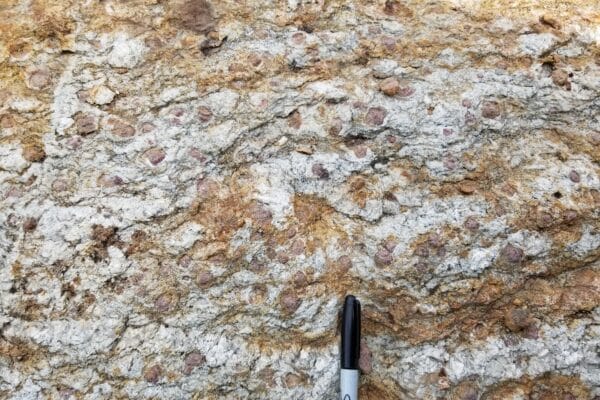- Research
-
YOU ARE
- Community member
- Future Student
- Student
- Professor
- Alumni
- Media
- Guidance counsellors
- INRS retiree
- Contact Us
- Newsroom
- Careers
- FR
-
Studies
We teach the next generation of researchers to develop scientific, social, and technological innovations.
-
Research
We find solutions through interdisciplinary research and industry or public and community partnerships.
-
INRS
We play an active role in Québec's economic, social, and cultural development.
Environment Day is an important time to reflect on the impact of natural resource exploitation.

Anne-Aurélie Sappin in the underground mine at Gwanin Mine (South Korea)
Rare earth elements (REEs), which are crucial to green and digital technologies, present an environmental challenge. How can we ensure they are sustainably extracted while supporting the energy transition?
Anne-Aurélie Sappin, a research scientist at the Geological Survey of Canada and associate professor at INRS, sheds light on the issue. As an expert in economic geology, she focuses her research on the formation of REE deposits associated with magmatic rocks, using approaches such as petrology, geochemistry, mineralogy, and geochronology.
Since the dawn of time, humanity has advanced and developed through the discovery and exploitation of metals. From the Copper Age to the Industrial Revolution, mineral resources have been catalysts for progress. Today, a new transformation is taking place—the technological revolution. REEs are an essential part of this revolution, as they are what make technological innovation and a greener economy possible.
Why are rare earth elements crucial?
In 2024, Canada drew up a list of 34 elements and minerals deemed critical to its economy and security. Among them, REEs, including scandium, yttrium, and fifteen lanthanides, were identified as a top priority. Despite their name suggesting scarcity, they are relatively abundant in the Earth’s crust. However, extracting them remains a huge challenge requiring complex and often costly processes.
REEs, which are found in everyday objects such as smartphones, laptops, and LED bulbs, also play a key role in electric vehicle motors, wind turbines, and defense technologies. They are indispensable in our connected and low-carbon society.
Towards responsible rare earth element extraction
Canada has some of the world’s largest known REE resources and reserves. Sites like Nechalacho, Strange Lake, and Ashram have strong exploitation potential.


However, as with any mining activity, REE extraction can impact the environment. The mining of minerals containing these elements, as well as the metallurgical processes needed to separate REEs from the mineral matrix, can affect the quality of soil and water near extraction sites. It is therefore crucial to use an integrated approach that considers the entire production chain—from resource exploration and extraction to residue management—to minimize environmental risks associated with REE exploitation.
Critical minerals are vital to the future of technology, but their extraction must be considered within a broader ecological perspective. By adopting more sustainable practices and investing in REE recycling, we can reconcile progress with the preservation of our environment.
You may also like
Share



